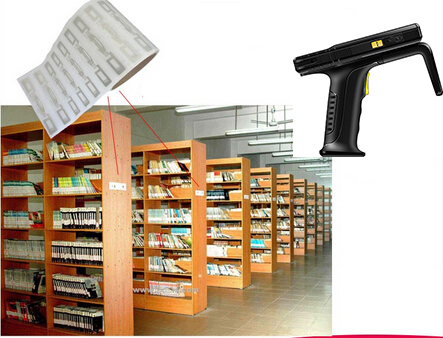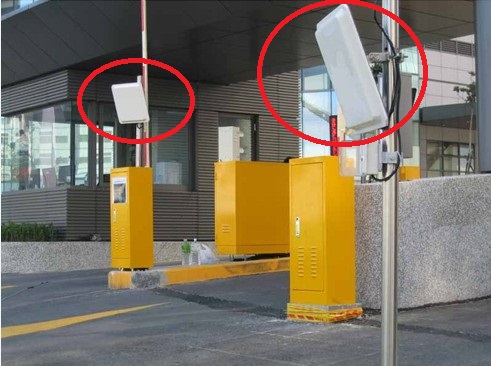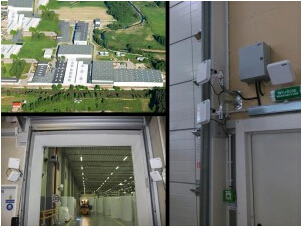 Call at :
+86 18681515767
Call at :
+86 18681515767
 Email :
marketing@jtspeedwork.com
Email :
marketing@jtspeedwork.com
 Call at :
+86 18681515767
Call at :
+86 18681515767
 Email :
marketing@jtspeedwork.com
Email :
marketing@jtspeedwork.com

With the increasingly mature of RFID technology, RFID technology applications are more and more, today we come to talk about RFID technology in the care of the elderly! What is the necessity of RFID technology in the application of old-age care? With the development of science and technology, people's lives have undergone major changes. In the face of the increasingly large domestic groups, the elderly population growth caused by its clothing, food, housing, transportation, medical, spiritual consumption and other needs, nursing home safety management system reform is imperative As the nursing home area is relatively wide, the service staff can not take into account the location of the elderly, the elderly safety problems brought a lot of difficulty. Because the elderly do not act as young as convenient, there are many security risks. At this time, The necessity of RFID technology is to highlight on the application of old-age care. RFID technology can be more effective solution and improve the old-age care problems. Germany: An elderly care center in New Wade, Germany, The RFID Device is equipped with a Wi-Fi real-time positioning system. The Elderly is equipped with Wi-Fi waterproof wristbands, which have two-color LED lights and call buttons, The alarm triggers the emergency switch, sends the pager to the staff, sends the alert and locates the guard object. The equipment and the application of the system effectively help the pension agencies to track and manage patients, thereby reducing the labor intensity of nurses, improve the efficiency of pension agencies. America: US engineers combine RFID technology with robots and video technology. Load the camera at the top of the robot, and rely on the indoor mobility of the robot and the visibility of the camera to send the images to the child's mobile phone via the Internet to monitor the living conditions of the elderly. The current robot in addition to the monitoring function also has to pick up the elderly, support the elderly to walk their own, to help excretion, care of dementia patients function. Japan: Japan will RFID technology and Internet docking, the elderly home care to carry out remote monitoring, such as the elderly in the toilet, the smart toilet can check the elderly urine, blood pressure, weight and fat, the measured data directly sent community health service center Of the elderly health files. Once the data is abnormal, it will immediately start the "telemedicine." Or the home of some of the elderly waist fitted with a wireless fall detector, as long as a fall, the machine will be issued "someone fell" voice prompts, and connected to the network service center, then the service center will quickly send to the elderly In view of the situation. What are the advantages of RFID technology in the application of old-age care? 1. personnel positioning, tracking function Managers at any time to master the activities of the old people informatio...

These day, I have seen a news about rfid technology. The news reported that ‘Bike Lane, one of the Houston area's busiest bicycle sales and repair businesses, is expanding a radio frequency identification-based solution to include repairs, as well as tracking the bikes to be sold. Since the company began using RFID technology to track its new bicycles in its back room in 2013, it has boosted sales and reduced labor related to employees searching for inventory, says Herb Beimgraben, Bike Lane's co-owner. The TracerPlus RFID technology is provided by Portable Technology Solutions’ The news show us that the rfid technology is popular among different industry. It is very convenient for factory to make a inventory in the warehouse. Meanwhile, you also improve the working effectiveness. For example: our company have many customer want to manage the out/in of warehouse. They will install the reader on the door. Some customer will use our UHF handheld reader to make a inventory on warehouse: Different industry can use opted for a TracerPlus system consisting of RFID tags, a handheld reader and an app to store the collected read data. With the TracerPlus RFID Tag Locator solution, when each new product arrives in its box, store personnel apply an EPC ultrahigh-frequency (UHF) RFID tag with a unique ID number, then manually record that number on paper, along with the bike's details. "I think it's amazing how this technology has benefited us," which make us life convenient and more easy.

Jietong Never Give Up, Looking forward to join New foreign trade wulin congress of Alibaba in next time ! On April 18, 2017, For a month circle of 2017 alibaba war activities finally ended in shenzhen futian district ganten hotel. There is a important, excellent, credibility and influence Commendation congress from the whole trade corporation of Shenzhen. The circle of a total of 87 enterprises to participate in war activities, More than 500 foreign trade personnel to fight, Turnover reached $304 million, The company's performance growth rate up to 2020%. Shenzhen Jietong Technology Company's overseas trade sales team join this activity. During this match, our sales team have a Positive enterprising, innovation attitude and to obtain the full harvest. Shenzhen Jietong Technology Co., Ltd. is a high-tech company focused on the R&D, production and sales of radio frequency identification (RFID) reader, special professional in UHF RFID series reader of internet of things. Jietong technology has the R & D background of the Hong Kong Polytechnic University, our target is that provide the product with stable function and high performance. Our company has own RFID R&D team, the engineers has more than 10 years of working experience. In order to provide the best service and product to customer, we are in development continuously; we also can provide the whole solution for the project, after-sale service and technology support. Jietong Technology has product lines which include UHF reader module, UHF RFID handheld reader, UHF RFID reader, car parking UHF reader, UHF access control reader, UHF antenna, UHF cards and tags. JT Series UHF RIFD reader already used in vehicle management intensively, using environment also include staff management for factory, weight management for warehouse, access control for warehouse and vehicle, clothing management, the tobacco logistics management, intelligent library management, production line identification management, financial escorts management, asset management and other applications. Over this activity, the one of overseas trade sales-Bunny's sales performance of Alibaba Circle War is: $25565, Because she have 1.5 years of sales experience and won the ministry of foreign trade sales champion by her own efforts. Then the other of overseas trade sales-Lori, Although She has not graduated yet, but it let her do well in this match over five months of work experience. Sales performance of Alibaba Circle War is: $1707. And another two new foreign trade sales- Layla, Richard,work hard in the competition, they also have rapid growth in the process of becoming a real foreign trade sales elite. Looking forward to their performance in the next time. And then, let editors take you enter this scene of the grand award ceremony, Feeling the passion and dream of collision experience activities. Eight army colonel make a speech The pioneer award Millions of heroes awards Senior for...

At present, most of the car parking access management using high-frequency close-in ic card, when the vehicle access, vehicles must stop by the card reader close to the card reader, can be identified only after the passage. UHF rfid technology using long-range microwave identification, and high-frequency rfid technology compared with reading distance, identification speed, can identify high-speed moving objects, and can simultaneously identify the advantages of multiple tags, microwave card sensing distance can be Up to 2-10 meters, can be effective card vehicles to achieve automatic identification without stopping, while recording and out of the relevant information. Ultra-high frequency rfid technology remote sensing ic card installed in the cab of each vehicle inside, when the car passing the reader's sensing area, the sensor ic card sent by the reader sends a response signal to send back to the signal Card reader. The card reader then passes the read signal to the parking controller, the parking controller receives the information, the automatic check for the effective card, the brakes automatically open, the digital video recorder to start recording, captured the car into the Photos, computer records car name and the driver's name and access time information. The use of ultra-high frequency rfid technology parking management system using long-range read and write cards, do not need to stop rolling window reader, in 2-10 m (adjustable) distance identification rfid card, automatic control release, simplifies the Vehicle access procedures to improve the efficiency of vehicle management, to provide a great convenience to the owner, but also improve the vehicle access to the parking lot when the security.

With the development of economy and technology, many thing has used the high-tech to control the development of event. Efficiently coordinated evacuation is a key for health and life of employees. While the best methods are still being looked for, RFID UHF is a common solution. It offers new approach for evacuating workers from endangered areas Nowadays, because manual counting is imprecise, many factory are faced with some danger. Time-consuming and it is easy to make serious mistake with it. The other popularevacuation way is identifying workers with their touchless cards.However, in the moment of general chaos and hurry one can just forget to take it. What’s more, if every employee wants to use his or her card in the same moment, then surely there would be some disarray. Precious time is lost. RFID UHF to save your Time. According to all indications, it seems that there is an efficient method for safe evacuation: it is a wireless technology RFID UHF. It is interesting that despite RFID itself was developed during IIWW for identification of enemy airplanes, new way for its usage are still discovered. One of such fresh idea for RFID implementation has been just recently proposed by Smart Technology Group. RFID characteristics makes it perfect for evacuation. Why? It can precisely identify simultaneously up to 300 tagged people or items – just in one second. There is no need for visual contact between RFID reader and tags. They do not need to be put to reader. Instead, they can be hidden under working clothes, in pocket or in bag. Tags themselves come in various size and shape. Shape modification does not change tags functionality. RFID UHF to increase your safety When the factory is faced with trouble, Many factor will be going to escape. The RFID UHF will read the tag. Then the system staff will know who has not go out, where he is. To some extent, some danger has reduced. It is logical to say that RFID UHF answers all evacuation challenges. It offers solutions that eliminate today’s disadvantages in evacuation coordination. It is interesting and valuable alternative for the most popular methods. And what’s more, it is perfectly matched with law regulations. It is becoming more common to demand from employers that they use technological solutions which make precise and instant identification possible. RFID UHF suits such requirements perfectly.
![[New release] desktop USB card reader JT-6210](/uploadfile/news/b429bf83428e8a9d925a239f859744b4.jpg)
Desktop USB card reader JT-6210 is designed to meet users in the background or management center for card management products designed. It has a high sensitivity, low operating current, single DC power supply, low price, high performance. This product can read card, write card, authorization, formatting and other operations. Product parameters: Physical Parameters: Size 142mm x 85mm x 20mm Weight 0.2kg Material ABS Antenna Built-in Performance parameters: Working frequency 902~928mhz or865~868mhz Supporting protocol EPC C1 GEN2 ISO18000 - 6C Radio power 0 - 17 dbm Reading range 0 - 60cm Writing range 0 - 10cm Communication interface USB Key board output support Power USB supply Environment Parameters: Working temperature - 20℃- 55℃ Store temperature - 20℃- 55℃ Application: Desktop USB card reader JT-6210 is widely used in a variety of RFID systems. The main applications are: 1, logistics and warehousing management: the flow of goods and storage management and mail, parcels, transport luggage, such as the flow management; 2, intelligent parking management: car park management and charging automation; 3, the production line management: the identification of the production process sentinel; 4, other areas: library management, attendance management, asset management systems.

As digital transformation accelerates worldwide, RFID (Radio Frequency Identification) technology has become a key driver of smart manufacturing, intelligent logistics, and the Internet of Things (IoT). Recently, our company was honored to represent China’s RFID industry at the G20 Summit, joining global leaders and innovators to discuss the future of digital economy, intelligent connectivity, and sustainable development. This participation marks not only the growing global influence of China’s RFID sector but also highlights the strength and innovation of “Made in China, Intelligent in China.” Rooted in China, Connected to the World As a leading RFID technology provider in China, our company is committed to the vision of “Data Made Simple.” We specialize in the development and manufacturing of RFID readers, antennas, tags, and integrated IoT solutions. Over the years, we have built a strong presence across industries such as smart manufacturing, warehouse management, livestock tracking, intelligent transportation, and retail automation. With outstanding performance and reliability, our products are now widely adopted in markets across Asia, Europe, and the Americas. The G20 Summit, themed “Building an Inclusive Digital Economy for a Smarter Future,” gathered global government officials, industry leaders, and technology experts to exchange ideas on innovation, sustainability, and the future of industrial intelligence. During the summit, our company representative delivered a keynote speech on “The Role of RFID in Global Smart Manufacturing and Digital Supply Chains,” sharing insights from China’s digital transformation journey and showcasing our technological achievements to an international audience. RFID: Driving the Next Industrial Revolution RFID technology lies at the heart of the Internet of Things. By enabling fast, contactless identification and real-time data collection, RFID is reshaping how industries operate. From smart factories and automated logistics to intelligent transportation systems and unmanned retail, RFID is fueling a new wave of digital efficiency and operational transparency. Our company has independently developed a comprehensive range of UHF RFID modules, industrial readers, ceramic antennas, and flexible tags designed to meet complex application environments. Through proprietary algorithms and integrated systems, we help clients in manufacturing, energy, education, healthcare, and other sectors achieve smart, data-driven operations. By combining RFID with AI, cloud computing, and big data analytics, we are building more connected and intelligent ecosystems that empower enterprises to make faster and smarter decisions. Representing China’s Voice on the Global Stage During the G20 discussions, our representative emphasized that China’s RFID industry is entering a crucial phase of transformation — from “manufacturing” to “intelligent manufacturing.” As the world transitions toward a data-centric economy, RFID has evolved ...
In modern industry and manufacturing, effective management of tools is crucial for ensuring production efficiency and safety. Traditional tool management methods often rely on manual registration and physical inspections, which are not only inefficient but also prone to errors. With the development of information technology, RFID (Radio Frequency Identification) technology-based tool management systems have emerged, providing enterprises with a more efficient and accurate management solution. Working Principle of RFID Technology RFID technology uses radio waves for data transmission and identification. Its basic components include RFID tags, RFID readers, and backend management systems. An RFID tag is a small electronic device, usually consisting of a chip and an antenna, capable of storing information about an item, such as its ID, type, and location. The RFID reader is responsible for communicating with the tags, reading the information contained in them, and transmitting the data to the backend management system for processing. In tool management, each tool is equipped with an RFID tag. Users simply need to bring the RFID reader close to the tool to quickly obtain detailed information about it. This process does not require direct contact or alignment, significantly increasing the speed and accuracy of identification. Advantages of RFID Technology Compared to Traditional Management Efficiency: Traditional tool management often relies on manual checks, which are slow and error-prone. RFID technology enables rapid scanning and batch identification, allowing multiple tools to be recognized at once, greatly improving work efficiency. This advantage is especially pronounced in large factories and warehouses, saving considerable time. Accuracy: Manual management is susceptible to omissions and errors, whereas RFID systems, through automated identification and data transmission, significantly reduce the error rate. Each RFID tag is unique, ensuring data accuracy and reliability. Real-Time Monitoring: RFID technology supports real-time data updates, allowing managers to always be aware of the usage, storage location, and status of tools. This capability helps enterprises quickly identify issues, optimize resource allocation, and improve management efficiency. Data Analysis: The vast amounts of data collected by RFID systems can be deeply analyzed to help enterprises understand tool usage frequency, maintenance cycles, and other information. This data-driven approach supports informed decision-making and promotes scientific management. Cost Reduction: Although the initial investment may be high, RFID systems can effectively reduce labor costs and improve tool utilization over the long term, thereby lowering overall management costs. Additionally, precise management reduces tool loss and damage, leading to further savings. Enhanced Safety: In high-risk industries, tool safety is paramount. RFID systems can track the usage history of tools, ensuring that...
Categories
New Products
JT-6210 0-1m UHF RFID Desktop USB Reader Writer ISO18000-6C Read More
JT-7100 0-3m 860-960MHz UHF RFID Industrial Grade RFID Reader Read More
JT-8380 0-6m UHF RFID 860-960MHz Middle Range Integrated Reader Read More
JT-P983 Industrial Tablet Pad RFID Handheld Reader Grade Long Range Android UHF Terminal Bluetooth RFID Reader For Warehouse Read More
JT-1550 Small Mini HF RFID 13.56MHz Module ISO14443A ISO 15693 Protocol Read More
JT-2302A 13.56MHz RFID Module ISO14443A ISO15693 Protocol Read More
JT-2302 HF RFID 13.56MHz Module ISO14443A ISO15693 Support Mifare1 IC card Read More
JT-2540 TM200 UHF RFID 4-port Module 860-960MHz TTL Read More
Copyright © 2025 Shenzhen Jietong Technology Co.,Ltd. All Rights Reserved.

IPv6 network supported